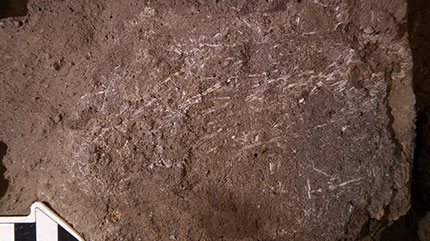200,000-Year-Old Mattress Analyzed in South Africa
Around 200,000 years ago people from Southern Africa not only slept on grass bedding but occasionally burned it, apparently to keep from going buggy. There was no tog rating on the duvet and an electric blanket was definitely out of the question.
But Stone Age mattresses were far comfier than the era’s name might suggest – and they were even designed to keep the bedbugs at bay.
Archaeologists have uncovered traces in a cave of ancient bedding from 200,000 years ago, made with a mixture of grasses and ash. Until now, the oldest known use of humans using plants to sleep on had dated back to around 77,000 years ago.


The cave, near the border between South Africa and Swaziland, contains a well-preserved record of on-off human occupation spanning nearly 230,000 years, researchers said.
They found that the real-life Flintstones used a variety of leaved grasses for beds, including the Panicum maximum tufted grass which is still growing in front of the cave.
The researchers also found charred remains of camphor bush, an aromatic plant that is still used in East Africa to repel creepy-crawlies.
They said: ‘Ash was possibly raked from hearths to create a clean, odor-controlling base for bedding.
‘Ash repels crawling insects, which cannot easily move through fine powder because it blocks their breathing and biting apparatus and eventually leaves them dehydrated.’
Dr. Lyn Wadley, an archaeologist at the Wits University’s Evolutionary Studies Institute in Johannesburg, said that as well as Stone Age man’s bedding, they found ‘stone tools and, possibly, ground red and orange ochre to colour objects and perhaps their skin’.
The scientists used a range of techniques, which involved microscopic and chemical analysis, to examine the fossilized grass samples from the Border Cave site.
Dr. Wadley added: ‘People also used medicinal plants to repel insects. Sometimes they burned their grass bedding and this would have killed pests and cleaned the site.’
The researchers say that the findings suggest ‘an early potential for the cognitive, behavioral, and social complexity’ of Stone Age humans that became more apparent from around 100,000 years ago.
Dr. Wadley said: ‘Before 200,000 years ago, close to the origin of our species, people could produce fire at will.
‘They used fire ash and medicinal plants to maintain clean, pest-free camps.
‘The simple strategies we have seen at the Border Cave give us a glimpse into the lifeways of people in the deep past.’

